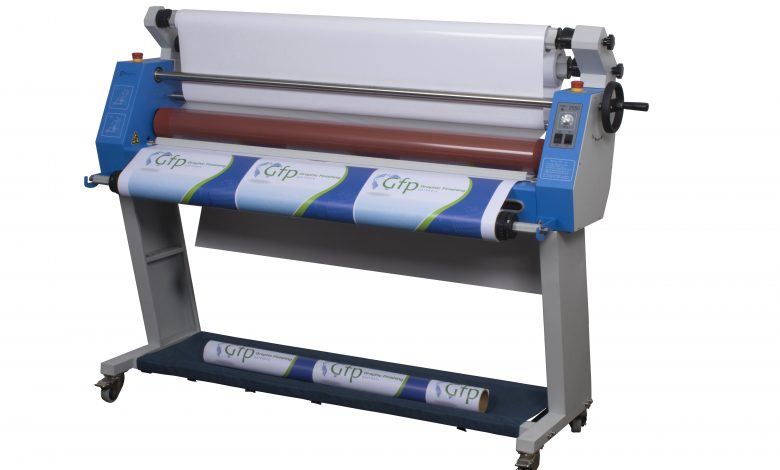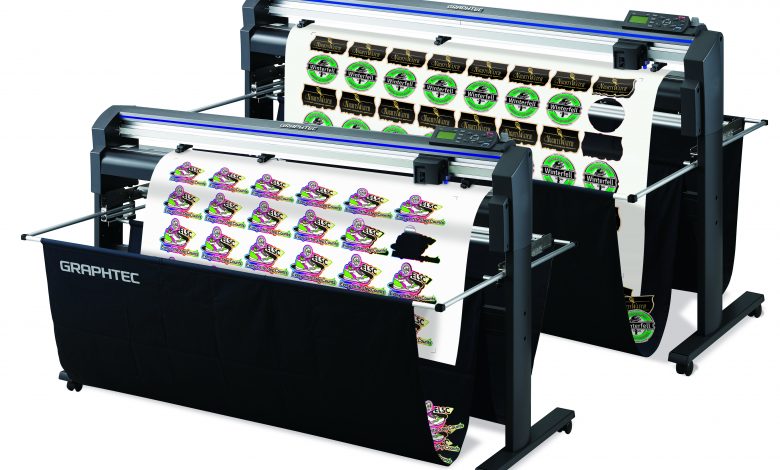Cutting and Laminating Options for Wide-Format
The type of industry you serve effects the kinds of finishing equipment you'll need
Digital finishing refers to many different types of applications, with the most common being cutting and laminating printed graphics. While I am not an expert in all types of finishing techniques and solutions-like vinyl seamers, for example- I do have 17 years of experience in the sign-making industry and have first-hand experience with different types of finishing systems, including vinyl cutters, flatbed digital die cutters and laminators.
Over the years, as wide-format printing has continued to gain in popularity and evolve, so too has the technology of the finishing systems evolved.
The type of industry you are serving (or hope to break into)-such as textiles, packaging, décor, signs, etc.-will drastically affect the type of finishing equipment you will need. Today’s traditional vinyl cutters have advanced to include the ability to read registration marks as an industry standard, but vinyl cutters, of course, are limited to rolled media.
Flatbed digital finishing tables, which are larger and more expensive than vinyl cutters, can handle rigid media and offer a wide variety of tools designed to finish many different applications. In addition, laminators are essential to most printed applications, both rolled and rigid, and are important to the longevity of the artwork and signs.
Vinyl Cutters
Every large-format shop needs a vinyl cutter. If you are printing on thicker substrates using a UV-cure printer, you will need a specialized flatbed cutter. However, if you are printing onto vinyl with a roll-fed printer, a traditional vinyl cutter will work great. Some sign shops today like the ease and compactness of an all-in-one print/cut solution. Those systems certainly have their place; however, in my opinion for high-production level shops, it’s best to have separate printing and cutting equipment for efficiency.
Some of today’s vinyl cutters include a trim and sheet-cut functionality, making them the perfect companion for large-format printers. This feature saves time and improves efficiency by eliminating the need to cut each print by hand. Also, the optical technology that reads registration marks has improved so that registration marks can be read more accurately, even through laminated graphics.
Choosing the correct digital vinyl cutter can be intimidating. The width of material that you will be cutting should be considered. The most common sizes are 54″ and 64″, but it depends on your application range. It is best to go as big as you can afford so that your business is able to grow. Another consideration is run length-are they short runs or long? Other considerations include the thickness and type of the materials you will be cutting, including lamination materials? The cutter must have a cutting force equal to the task.
Guaranteed tracking distance accuracy and cut-force vary drastically from machine to machine. Understanding your shop’s individual needs will help determine which machine brand and size will work best.
Flatbed Cutters
Flatbed technology is relatively new compared to vinyl cutters, but their evolution has proceeded rapidly and they have become very popular finishing options due to their versatility and the growth of rigid printer capabilities.
With a traditional roll-stock cutter there are two different tool options-knife or pen. Flatbed cutters, however, have many different tool options for a wide variety of applications. Flatbeds have a versatile motorized tool head that can accept many different types of tools for a variety of substrates and applications-from wood, leather, fabric, and acrylic, to foam board, cardboard, and roll material, for example. The flexibility of the flatbed finishing system allows you to expand your business into new areas just by inserting a new tool.
The size of a flatbed finishing system can be concerning for some. However, many different sizes of flatbed cutters are now available. One flatbed cutter we sell has a relatively small footprint and can fit into most shops, yet it is able to handle large panels of rigid substrate media. In addition to a vacuum bed, all our models employ pneumatic media advance clamps to hold down the hard media and continuously move it forward to accommodate large finishing jobs. In addition, the roll support and conveyer systems allow for long, continuous runs of flexible media.
Again, the type of work that your shop will be handling should be analyzed-what size and types of media, length and tracking accuracy needs. And of course, the number of functions included. Plus, the level of quality built into the cutting table must be balanced against how much you are willing to spend.
Lamination Equipment
There are many reasons to laminate wide-format digital graphic prints: laminating protects against abrasion, chemicals, and UV exposure. Lamination also extends the outdoor life of printed graphics. For example, vehicle wraps require lamination to protect the print from abrasion due to washing and debris. Lamination extends the longevity of printed material and is considered essential to some applications.
There are different types of laminating equipment and techniques. One of the oldest is hot lamination, the kind that you are likely most familiar with. These laminators heat the adhesive on the laminate which activates it, and allows it to better bind to the printed material. While it is a very durable technique, it can sometimes damage materials in the process. Over the years, as laminate film manufacturers have improved their adhesive formulas, there is less need for heating as most laminate adhesives today are activated by pressure rather than heat. However, some of today’s laminators do offer “heat-assist” options that can help with adhesive flow.
Cold laminators employing only pressure to activate the adhesive are usually less expensive than hot/heat-assist laminators because of the lack of a heating apparatus. They are usually easy to operate, and cold laminating won’t damage delicate prints.
There are also different types of laminating films available-cast or calendered films, and water-based or solvent-based adhesives. In general, you should match the type of laminating film material with the type of printed material, and adhesive type with adhesive type. Cast film will stretch better and is good for applications with compound curves, such as vehicle wraps. Calendered film is best when applied to flatter surfaces and simple curves.
Like printers and cutters, laminators come in different widths. The size of your print and cutter solution should be considered when choosing a laminator.
Conclusion
Finishing equipment is essential to any sign shop, especially grand-format shops. Traditional vinyl cutters are reliable solutions for cutting roll-fed media, and flatbed cutters are necessary for shops that use a flatbed UV-cure printer or have need to cut rigid substrate media. Laminators extend the longevity of printed graphics and are considered essential to some applications. Choosing the proper finishing systems for the size and type of work that your shop handles will greatly increase efficiency.



